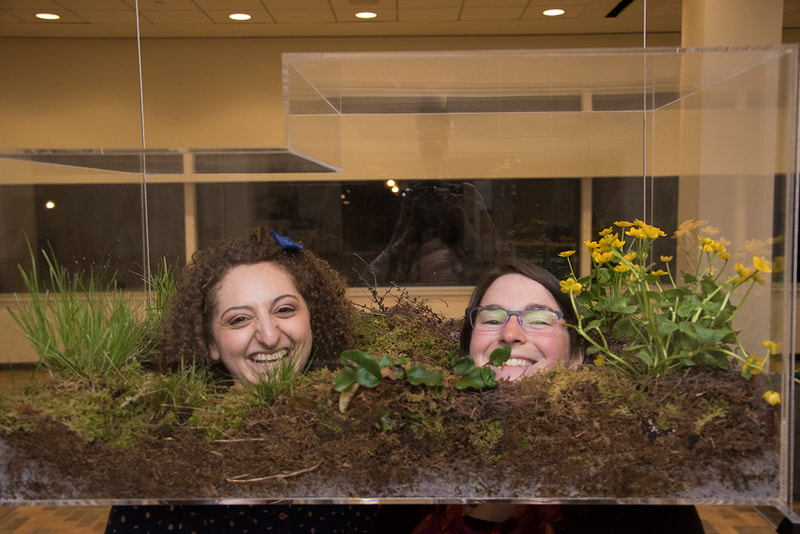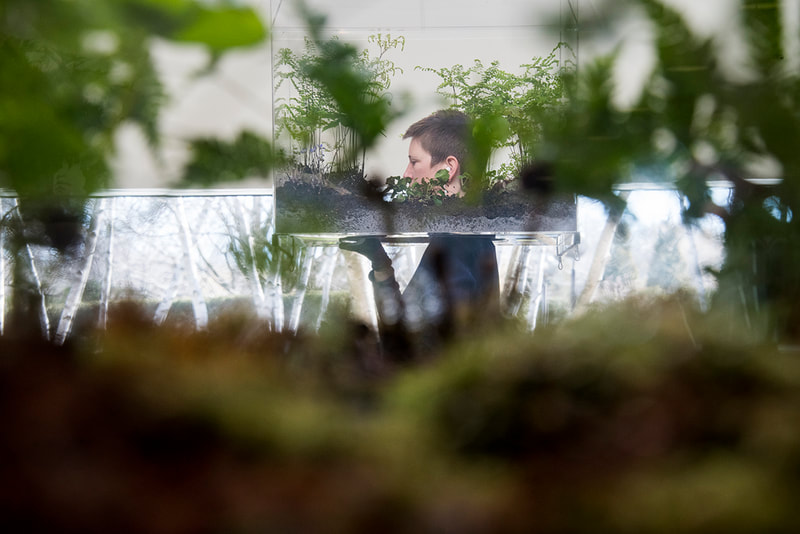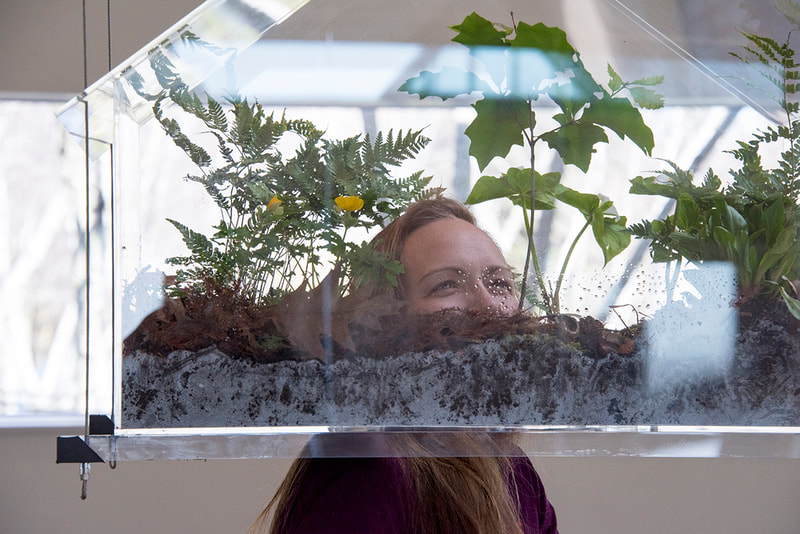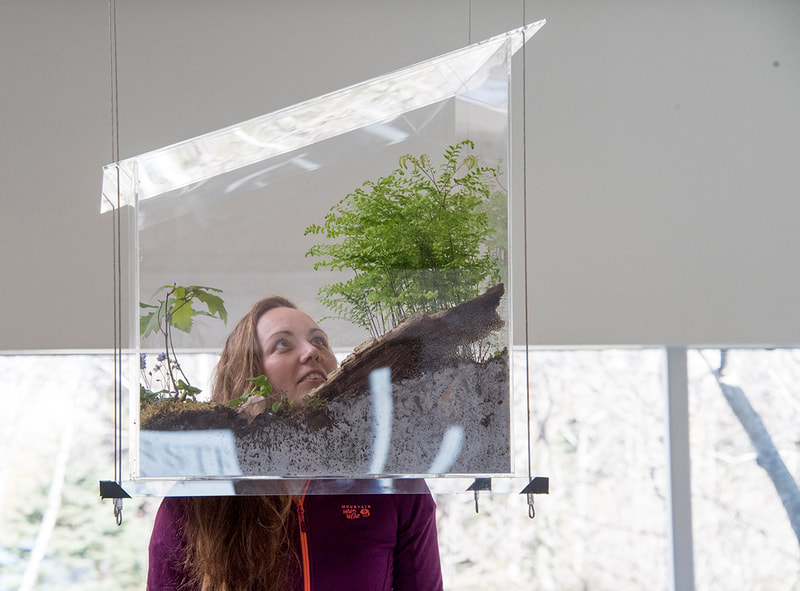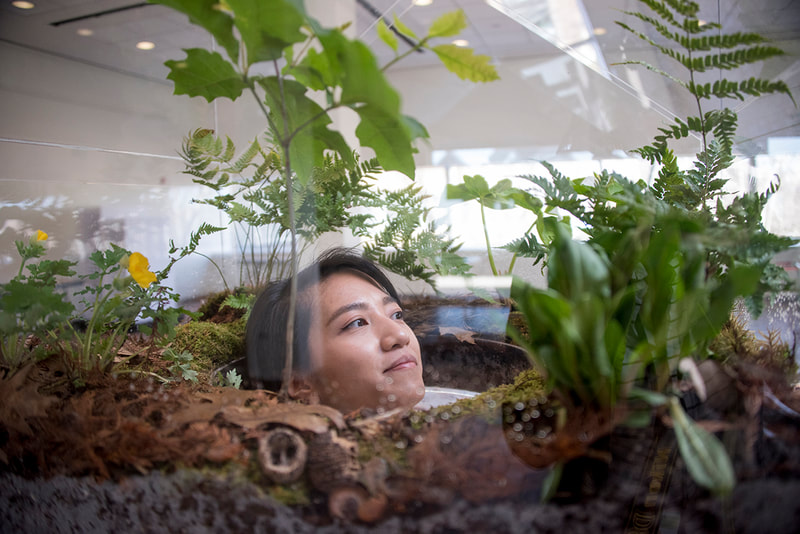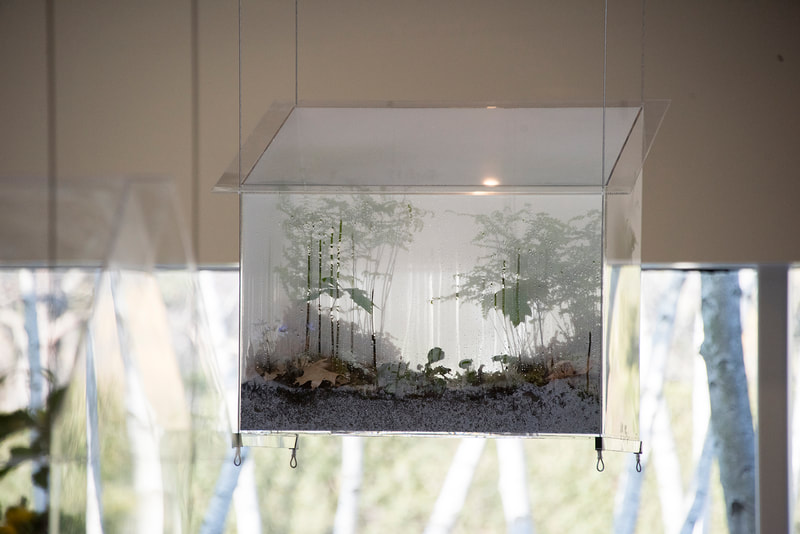LOCAL HOMES
Local Homes
Acrylic, hardware, local soils, mosses and plants from bog, woodland and ravine ecosystems.
Chicago Botanic Garden, Chicago, IL
Created in collaboration with botanist Pati Vitt from Chicago Botanic Garden, three “personal biospheres” hang in the space. Each represents a specific local ecology: a bog, a ravine, and a woodland. Plant lists and botanical interpretation provide another layer of engagement, as people place their heads inside the structures for a close-up, immersive sensory experience of plants.
Photos courtesy of Chicago Botanic Garden
Acrylic, hardware, local soils, mosses and plants from bog, woodland and ravine ecosystems.
Chicago Botanic Garden, Chicago, IL
Created in collaboration with botanist Pati Vitt from Chicago Botanic Garden, three “personal biospheres” hang in the space. Each represents a specific local ecology: a bog, a ravine, and a woodland. Plant lists and botanical interpretation provide another layer of engagement, as people place their heads inside the structures for a close-up, immersive sensory experience of plants.
Photos courtesy of Chicago Botanic Garden
